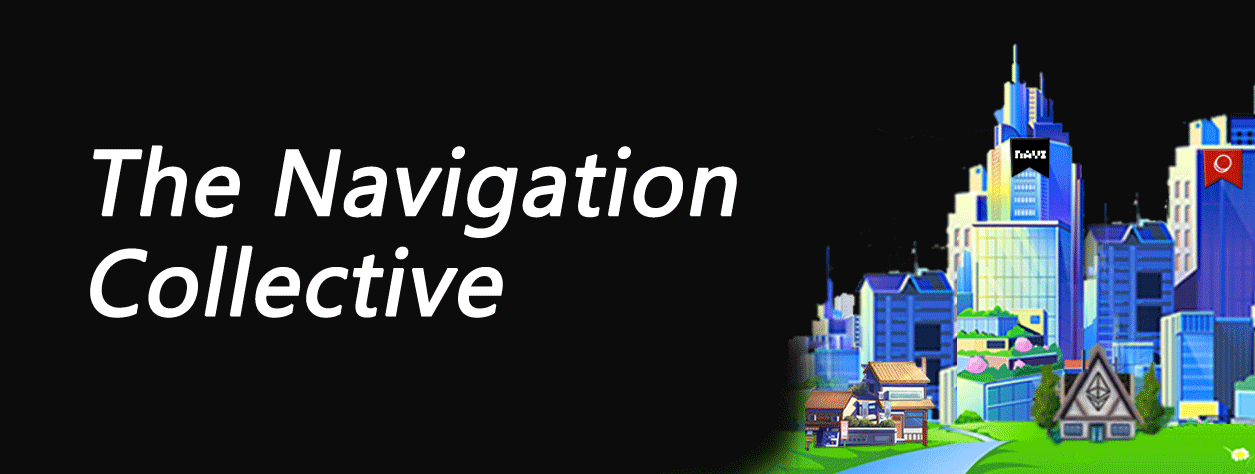Stephen King once wrote a science fiction novel called “The Diamond Age”, in which there is an artificial intelligence device that acts as a mentor for people throughout their lives. When you’re born, you’re paired with an AI that knows you so well—knows your likes and dislikes, follows you through life, helps you make decisions, and steers you in the right direction. That sounds great, but you never want technology like this falling into the hands of giant middlemen. Because this will bring a lot of control to the company, as well as a series of privacy and sovereignty issues.

We wanted this technology to be truly mine-owned, and a vision emerged that you could do that with the blockchain. You can embed artificial intelligence in smart contracts. Keep your data private with the power of zero-knowledge proofs. In the next few decades, this technology will only get smarter and smarter. You can choose to do whatever you want, or change it in any way you wish.
Navigation is a decentralized AI computing power platform based on the Optimism network. The goal is to create a truly decentralized artificial intelligence autonomous system, providing the most advanced robot AI computing power learning model on the blockchain, and users can use the Navigation blockchain Smart contracts on the platform to achieve settlement and incentives.

So what is the relationship between blockchain and artificial intelligence? What kind of world will artificial intelligence lead us to? What is the current status and challenges of artificial intelligence? What role will blockchain play in this process?
AI and blockchain: fighting each other
AI is a sustainable innovation that enhances the business models of incumbent technology companies and helps them make top-down decisions. The best example of this is Google, which can decide what content to present to users across billions of users and billions of page views. Cryptocurrency, on the other hand, is essentially a disruptive innovation whose business model is fundamentally at odds with that of large technology companies. So this is a movement led by fringe rebels, not by those in power.
I think we’re headed down a path to AI where everyone’s data is aggregated into these massive model training to optimize the model. Cryptocurrencies, on the other hand, move in the opposite direction, increasing personal privacy and empowering users to take control of their data sovereignty. It can be said that encryption technology is a technology that competes with artificial intelligence, because it can help us distinguish content created by humans or artificial intelligence from rich content. In a world where content created by artificial intelligence is flooded, encryption technology will Become an important tool for maintaining and preserving human content.
For example, there is a timestamp on the blockchain, showing that you said such and such a thing on this date. If someone falsifies the video, then you can use the timestamp to deny it . All of this data, real real data, is recorded on the blockchain and can be used to prove that this deepfake video is really fake. So I think, blockchain might help fight counterfeiting.
How does the blockchain break the game?
Artificial intelligence is essentially a centralized technology. It benefits in large part from economies of scale, as things are much more efficient running off of a single data center. In addition, data, machine learning models, machine learning talent, etc. are usually controlled by a small number of technology companies,
How Navigation Helps Us Realize the Decentralization of Artificial Intelligence
Navigation can be applied to data centers, databases, and machine learning models themselves. For example, in terms of computing, using zero-knowledge proofs, users can prove that the process of actually doing inference or training the model is correct.
This is actually technology that already exists. The question is, the current technology works well for medium-sized models, can we scale it up to larger models? This is quite a challenge and requires the efforts of many more companies.
How do AI and encryption form a business model?
The demand side of the network can also benefit. They use this network as the infrastructure for training their own machine learning models. Maybe their model can contribute to something interesting, like a next-generation chat tool. In these models, since these companies will have their own business models, they will themselves be able to drive value capture.
As you can imagine, every transaction that goes through this network, every payment method that pays for computation, data, or models, is likely to be charged a fee that goes into a vault controlled by the entire network. Token holders jointly own the network. This is essentially the business model of the network itself.
AI Boosts Code Security
The problem to be solved by Navigation
1: Expansion: Navigation uses a large number of decentralized computers to perform tasks to create an extended computing network that can handle a large number of task calculations
2: Security: Navigation uses blockchain technology to help improve the security of artificial intelligence applications and ensure the security and transparency of calculation results.
3: Decentralization: Navigation is a decentralized computing protocol, which means that it is not controlled by any individual or organization, which makes the protocol difficult to control and manipulate.
4: Efficiency: Navigation allows developers to decompose large tasks into multiple computers for simultaneous execution, which can shorten training time and reduce computing costs.
5: Availability: Navigation allows developers to distribute computing tasks across a decentralized computer network, which can make artificial intelligence programs less susceptible to server or network interruptions.
I think that by combining very large machine learning models trained on all the data in the world, along with these other tools, it might be possible to make computing programs better than human programmers. Even if they still make mistakes, they might just be superhuman. This will be a big moment in software engineering.
Why Navigation chose Optimism Network

The products provided by L2 and L1 are similar, namely: stable, anti-censorship and open block space, we can also regard it as a special on-chain cloud service. The main advantage of L2 blockspace over L1 is that it is cheaper. Taking OP as an example, its average Gas cost is only 1.56% of that of Ethereum.
It is also because blockspace is a specialized cloud service, which also means that the requirements it meets are not universal, and most Internet services do not need to be based on L1 or L2. In the traditional world, financial services with heavy constraints and insufficient transparency have the most abundant application practice on the blockchain.
On L2, the larger the user scale and the richer the types, the less difficult it is for people to reach cooperation on L2, and the easier it is for new service models to sprout here to further satisfy and introduce users into this network. Every new User entry and residency on the L2 network increases the potential value of this L2 network to other users.
In the Web3 world, the network effect strength of L1 & L2 is second only to the stable currency represented by USDT. The higher the barriers of L1 & L2 are, the higher the valuation premium will be.

Navigation’s innovation and team are top-notch, and the AI computing power system of the Optimism network is being carefully built , and will become the infrastructure of AI computing power in the future. The most important thing is that the products and experiences we are developing will be interesting and shared , and help drive decentralized AI artificial intelligence!
